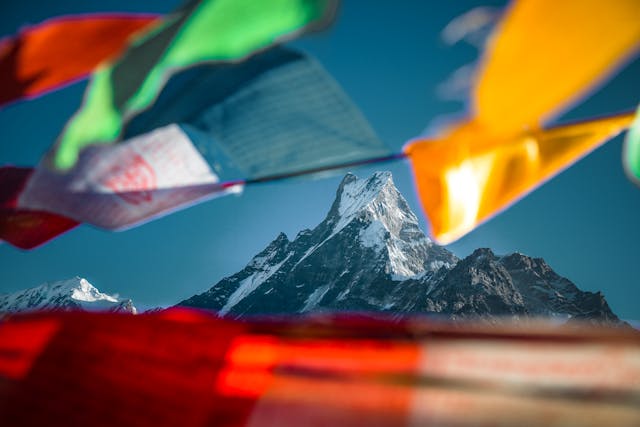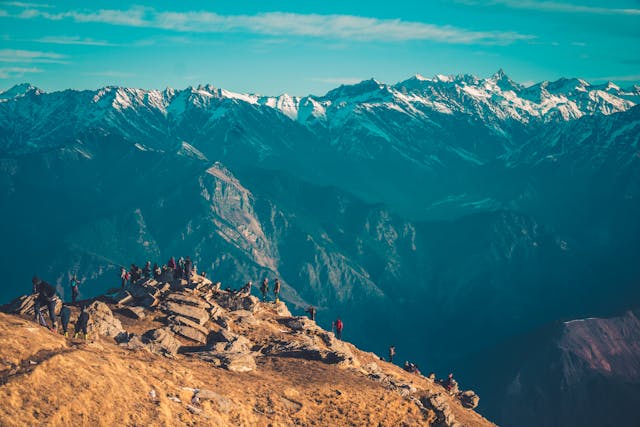Summary
High-altitude trekking offers incredible adventure but also brings significant risks such as unpredictable weather, altitude sickness and injuries in remote locations where helicopter evacuation may be the only option. Standard travel insurance rarely provides adequate protection, most policies won’t cover trekking above 3,000–4,000m. That’s why choosing the right trekking travel insurance is essential.
A specialist policy will cover emergency medical treatment, helicopter rescue, repatriation, trip cancellation and personal effects. Most importantly, it is vital to check the policy altitude limits match your planned trek – some offer protection up to 7,000m.
When buying high altitude trekking insurance, look closely at exclusions especially around pre-existing medical conditions, trekking without a qualified guide and technical climbs. Trekkers heading to Nepal should also be aware of special conditions for helicopter rescue and increased policy excesses.
With the right cover in place, you can focus on enjoying the challenge and views of the world’s great trekking routes.

- Introduction
- What are the Main Risks Associated With High Altitude Trekking?
- Why Won’t My Standard Travel Insurance Cover Me for High Altitude Trekking?
- What Does High Altitude Trekking Travel Insurance Cover?
- What to Look For in a Trekking Travel Insurance Policy
- When Am I Not Covered by Trekking Travel Insurance?
- Frequently Asked Questions
- Final Thoughts
Introduction
Planning to hike Everest Base Camp, Kilimanjaro, or the Inca Trail? High altitude treks offer incredible adventure, breathtaking views, and the chance to challenge yourself. However, trekking at height also exposes you to risks such as altitude sickness, injuries in remote locations and the need for expensive rescue operations.
That’s why specialist high altitude trekking insurance is essential. Standard travel policies don’t usually cover hiking above a certain elevation, making them unsuitable. Our complete guide to trekking travel insurance will help you understand what cover you need, what to watch out for, and how to make sure you’re fully protected before setting off.
What are the Main Risks Associated With High Altitude Trekking?
As you travel above 2,500m, the air contains less oxygen and altitude sickness becomes a real risk even for the fittest hikers. Trekkers need to ascend slowly, increasing sleeping altitude by no more than 500m per night and taking regular rest days. As you climb, the environment also becomes more remote and challenging. Some of the main dangers of hiking at high altitude are:
- Altitude-related illness:
- Acute Mountain Sickness (AMS) – symptoms include headaches, nausea and fatigue
- High-Altitude Pulmonary Edema (HAPE) – condition involves fluid retention on the lungs and requires immediate treatment
- High-Altitude Cerebral Edema (HACE) – the most severe form of altitude sickness where the brain swells due to fluid retention
- Injury in remote terrain – sprains, falls or accidents that are difficult to treat away from medical help.
- Evacuation challenges – with few roads, helicopter rescue is often the only option.
- Extreme weather – sudden snowstorms, freezing temperatures and landslides.
Why Won’t My Standard Travel Insurance Cover Me for High Altitude Trekking?
Most standard travel insurance policies classify high altitude trekking as an extreme activity. While they might cover hiking on marked trails at lower elevations, treks above a stated height ranging from 2,000m to 4,000m are often excluded. Many popular treks exceed this.
| Trek | Maximum Height |
| Everest Base Camp | 5,364m |
| Annapurna Circuit | 5,416m |
| Manaslu Circuit | 5,106m |
| Inca Trail | 4,215m |
| Mount Kilimanjaro | 5,895m |
Source: Wikipedia
Cover My Adventure reviewed the 146 standard travel insurance policies featured in Which’s Best Travel Insurance Companies & Policies 2025. Of these, 88% only covered hiking and trekking up to 4,000m. Just 9% extended cover to treks up to 6,000m and nearly all of these policies included additional restrictions such as:
- No cover for helicopter rescue or evacuation from remote regions.
- Only covering trekking as an incidental activity rather than as the main purpose of a trip.
- No personal accident or personal liability cover when trekking above a stated elevation. Personal liability cover protects you if you are liable to pay damages due to accidentally injuring someone or causing loss or damage to their property.
Inadequate cover could leave you personally responsible for thousands of pounds of medical evacuation and treatment costs.
What Does High Altitude Trekking Travel Insurance Cover?
A specialist trekking travel insurance policy is designed for the challenges of high-altitude hikes and should cover:
- Emergency medical expenses
- Helicopter rescue and medical evacuation: crucial for remote treks
- Repatriation to your home country: cover for transport home after a serious incident
- Trip cancellation: protection if you can’t start your trek due to illness, injury, or family emergencies
- Personal effects: lost, stolen or damaged trekking gear
- Personal liability: If you accidentally injure others or damage property during your trek.
What to Look For in a Trekking Travel Insurance Policy

1) Altitude Limits
The most important factor. Always check:
- The maximum altitude covered by the policy. Our curated list of trekking travel insurance policies includes options that cover hikes up to 7,000m.
2) Emergency Medical & Evacuation Cover
Look for a policy that includes:
- 24-hour emergency medical assistance.
- Helicopter rescue and medical evacuation
3) Pre-existing Medical Conditions
High altitude trekking is a strenuous activity. When buying high altitude trekking insurance, check the policy terms around pre-existing medical conditions carefully and complete the insurers medical questionnaire accurately. Omissions can invalidate your cover.
4) Trekking Equipment Cover
Check your policy covers:
- Loss, theft, or damage of gear.
- Delayed baggage
5) Trip Cancellation & Curtailment
Treks often involve expensive permits, guides, and porters. Insurance should cover:
- Cancelling before you leave due to illness or injury.
- Abandoning the trek due to sickness or weather.
- Tour operator bankruptcy.

6) Adventure Add-ons
Some insurers require an ‘adventure sport’ or ‘trekking’ extension for cover above certain altitudes. Others specify additional cover or add-ons for particular treks such as Everest Base Camp or Kilimanjaro.
Check you have the right level of cover for your trip.
7) Trekking in Nepal
If you are going trekking in Nepal, look out for special policy conditions. Many insurers require pre-authorisation for all helicopter mountain rescue costs and have a much higher policy excess for these costs. Some policies also require you to select an add on for Nepal trekking.
✅ For more information on Nepal trekking insurance, check out our dedicated post and curated list of policies.
When Am I Not Covered by Trekking Travel Insurance?
Even with specialist cover, certain exclusions can apply. You may not be covered if you:
- Trek above the stated altitude limit.
- Leave recognised routes or trails.
- Attempt technical climbs that require ropes, picks, or other specialist equipment (unless your policy specifically includes them).
- Many policies require your trek to be professionally organised and accompanied by a suitably qualified guide.
- Are under the influence of alcohol or drugs.
- Fail to declare pre-existing medical conditions.
Frequently Asked Questions
What If I Already Have Standard Travel Insurance?
You may already have a standard travel insurance policy in place, but most policies won’t cover you for trekking at altitudes greater than 3,000–4,000m. Many also exclude helicopter evacuation and trekking as the main purpose of your trip. That’s where activity top-up insurance comes in. Offered by a limited number of specialist providers, these policies extend your existing cover for extreme activities such as high altitude trekking.
✅ For more information on activity top-up insurance, see our guide on how activity top-up insurance works and what it includes.
Do I Need Specialist Trekking Travel Insurance For Hiking Below 3,000m?
If your trek stays below 3,000m on well-marked routes, some standard policies may cover you. However, check the altitude limit and conditions carefully and confirm whether medical helicopter evacuation is included.
Can I Buy Trekking Travel Insurance After Starting my Trek?
Most insurers require you to buy cover before leaving your home country. Some allow purchase after departure but exclude claims from incidents that have already occurred. Furthermore, a ‘waiting period’ can apply with no cover for illnesses which develop during this period. Our curated list includes policies which can be purchased if already travelling.
Does Trekking Insurance Cover Independent High Altitude Trekking?
Not always. Many policies require you to be part of an organised trek with a licensed guide, especially in Nepal. Check the policy conditions carefully to see if independent trekking is covered.
Final Thoughts
High-altitude trekking is an unforgettable adventure, but it carries risks that standard travel insurance won’t cover. Whether you’re heading for Everest Base Camp, Kilimanjaro, or the Andes, make sure you have high altitude trekking travel insurance that includes altitude cover, helicopter evacuation, and trip cancellation.
✅ Check out our curated list of high altitude trekking travel insurance policies.
